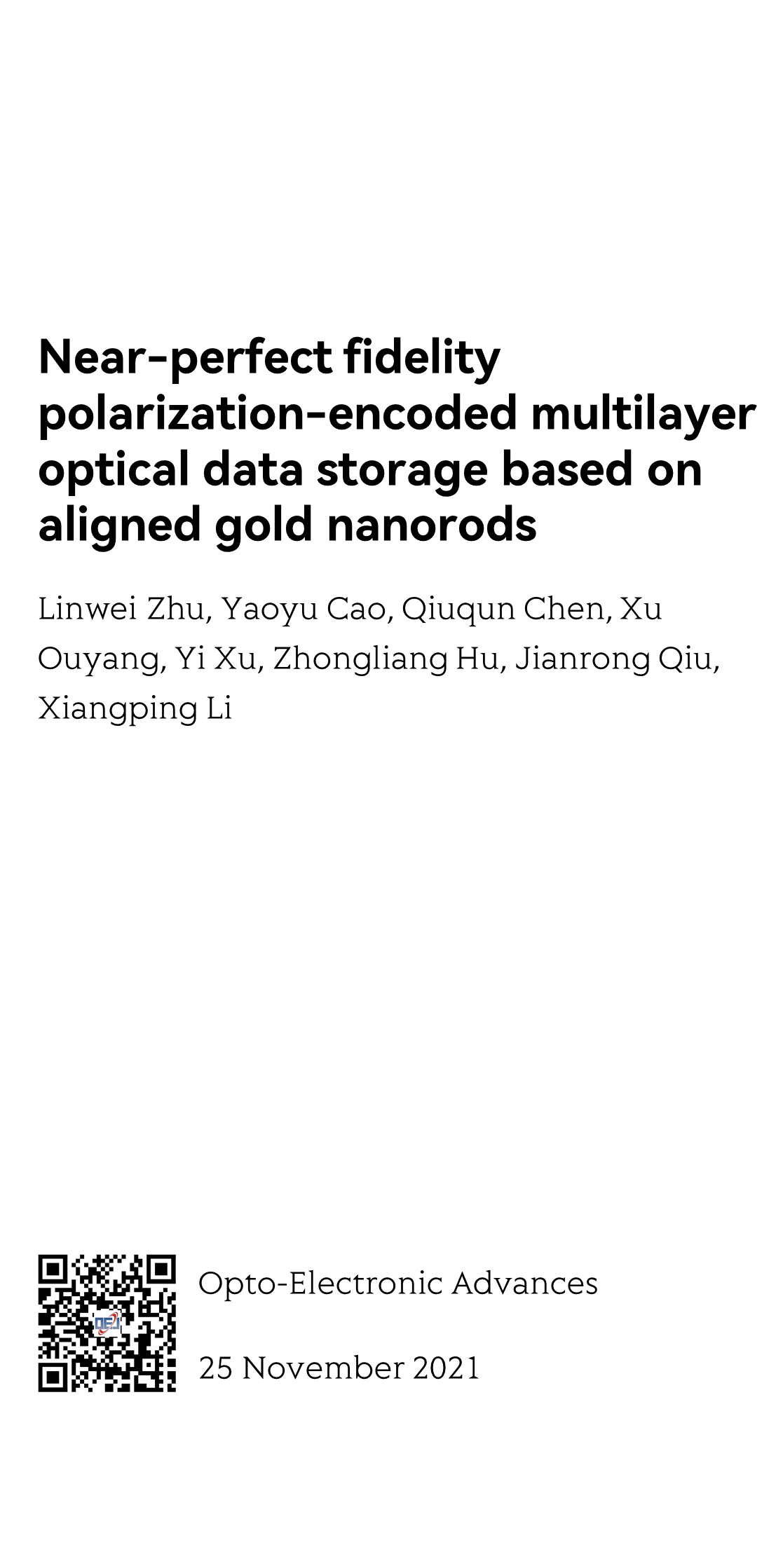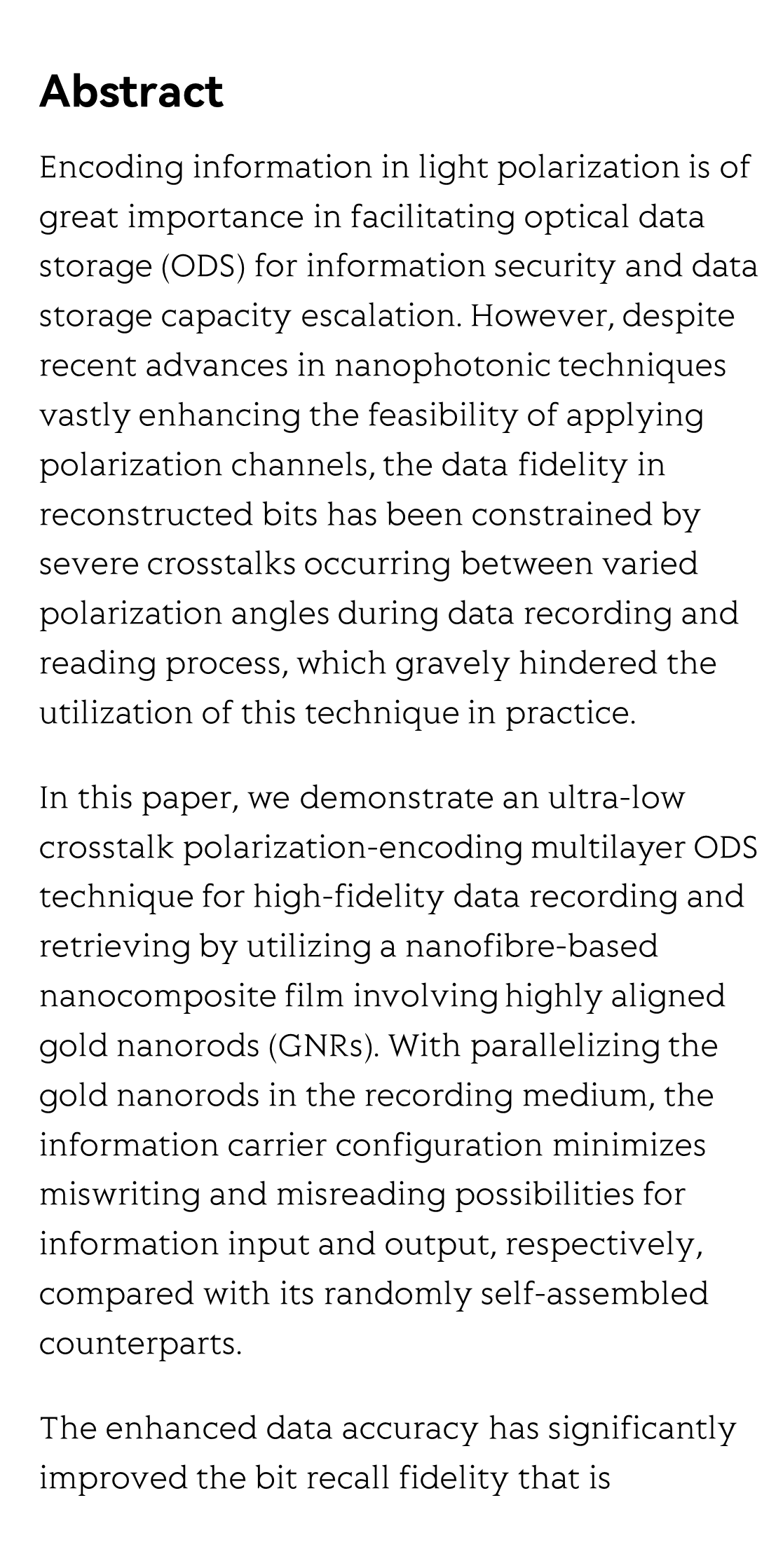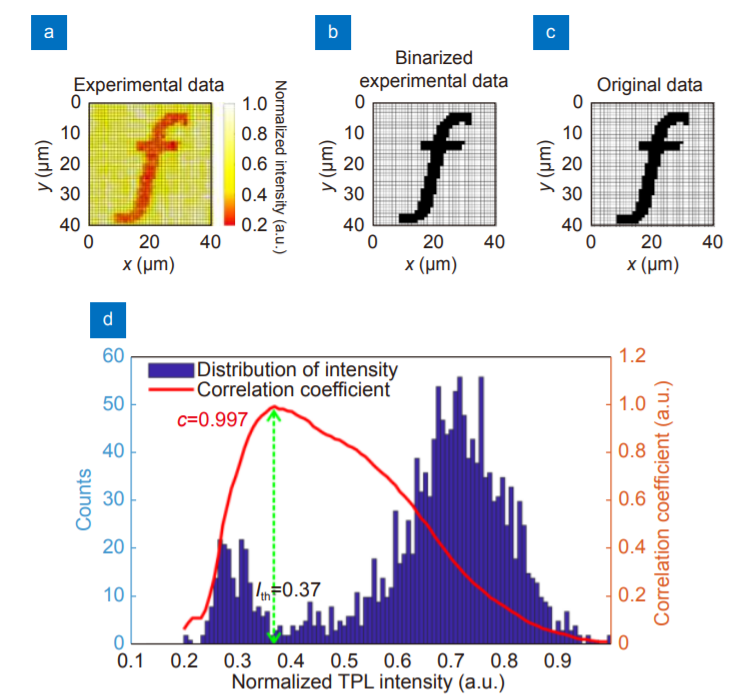(Peer-Reviewed) Near-perfect fidelity polarization-encoded multilayer optical data storage based on aligned gold nanorods
Linwei Zhu 朱林伟 ¹, Yaoyu Cao 曹耀宇 ², Qiuqun Chen 陈秋群 ³, Xu Ouyang 欧阳旭 ², Yi Xu 徐毅 ², Zhongliang Hu 胡忠亮 ³, Jianrong Qiu 邱建荣 ³ ⁴, Xiangping Li 李向平 ²
¹ School of Physics and Optoelectronic Engineering, Ludong University, Yantai 264025, China
中国 烟台 鲁东大学物理与光电工程学院
² Guangdong Provincial Key Laboratory of Optical Fiber Sensing and Communications, Institute of Photonics Technology, Jinan University, Guangzhou 510632, China
中国 广州 暨南大学光子技术研究院 广东省光纤传感与通信技术重点实验室
³ State Key Laboratory of Luminescent Materials and Devices, and Institute of Optical Communication Materials, South China University of Technology, Guangzhou 510640, China
中国 广州 华南理工大学发光材料与器件国家重点实验室 光通信材料研究所
⁴ State Key Laboratory of Modern Optical Instrumentation, College of Optical Science and Engineering, Zhejiang University, Hangzhou 310027, China
中国 杭州 浙江大学光电科学与工程学院 现代光学仪器国家重点实验室
Opto-Electronic Advances, 2021-11-25
Abstract
Encoding information in light polarization is of great importance in facilitating optical data storage (ODS) for information security and data storage capacity escalation. However, despite recent advances in nanophotonic techniques vastly enhancing the feasibility of applying polarization channels, the data fidelity in reconstructed bits has been constrained by severe crosstalks occurring between varied polarization angles during data recording and reading process, which gravely hindered the utilization of this technique in practice.
In this paper, we demonstrate an ultra-low crosstalk polarization-encoding multilayer ODS technique for high-fidelity data recording and retrieving by utilizing a nanofibre-based nanocomposite film involving highly aligned gold nanorods (GNRs). With parallelizing the gold nanorods in the recording medium, the information carrier configuration minimizes miswriting and misreading possibilities for information input and output, respectively, compared with its randomly self-assembled counterparts.
The enhanced data accuracy has significantly improved the bit recall fidelity that is quantified by a correlation coefficient higher than 0.99. It is anticipated that the demonstrated technique can facilitate the development of multiplexing ODS for a greener future.
Flicker minimization in power-saving displays enabled by measurement of difference in flexoelectric coefficients and displacement-current in positive dielectric anisotropy liquid crystals
Junho Jung, HaYoung Jung, GyuRi Choi, HanByeol Park, Sun-Mi Park, Ki-Sun Kwon, Heui-Seok Jin, Dong-Jin Lee, Hoon Jeong, JeongKi Park, Byeong Koo Kim, Seung Hee Lee, MinSu Kim
Opto-Electronic Advances
2025-09-25
Dual-frequency angular-multiplexed fringe projection profilometry with deep learning: breaking hardware limits for ultra-high-speed 3D imaging
Wenwu Chen, Yifan Liu, Shijie Feng, Wei Yin, Jiaming Qian, Yixuan Li, Hang Zhang, Maciej Trusiak, Malgorzata Kujawinska, Qian Chen, Chao Zuo
Opto-Electronic Advances
2025-09-25







